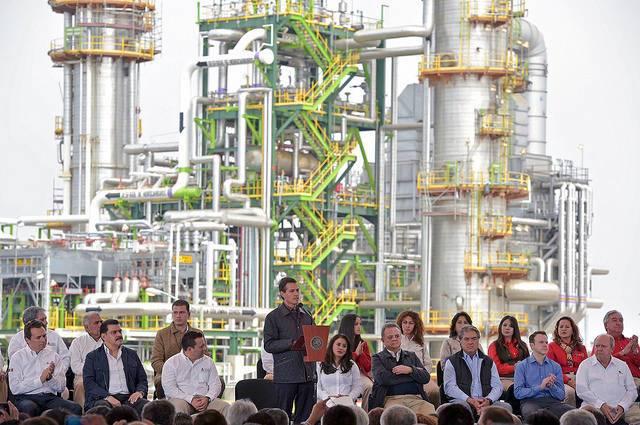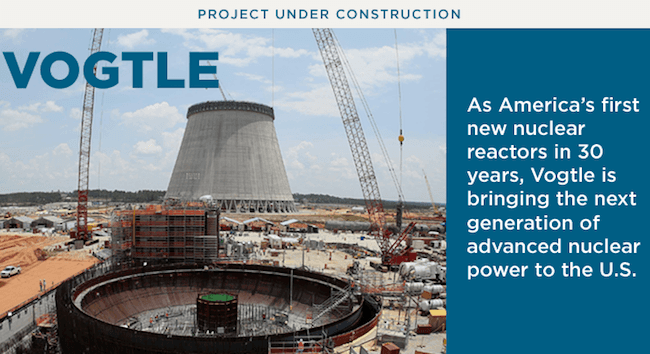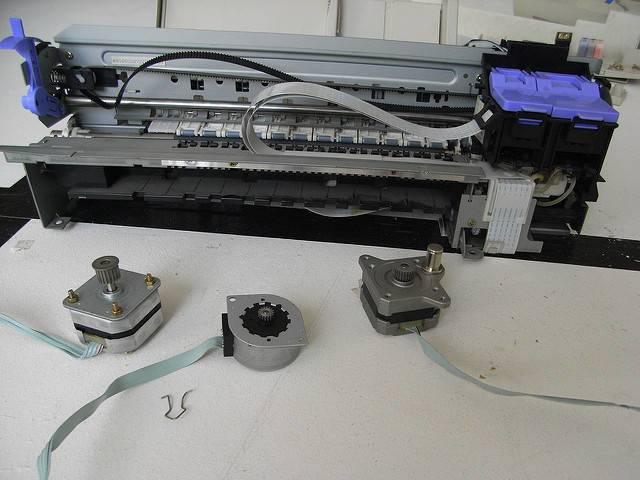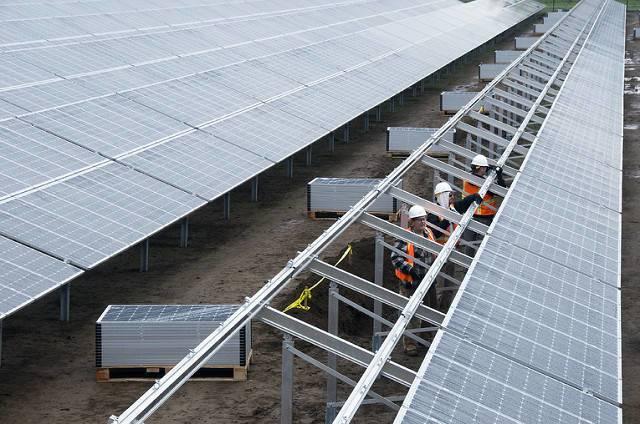Global Warming Impact from Cattle Even Higher Than Previously Thought


In the global quest to slow down the pace of greenhouse gas emissions, carbon usually scores the most attention. Nevertheless, more companies and governments have also realized they need to consider the impacts of methane, a greenhouse gas that is far more potent than carbon. Recent data suggests methane emissions are spiking worldwide, but who is the culprit? Is the energy sector to blame, due to fracking and its ties to the natural gas boom? Or is this increase largely due to the meat industry?
A recent study suggests that global methane emissions from livestock are even higher than the conventional wisdom would have us believe. The result will impose even more pressure on the meat industry, which in recent years has pledged to become more accountable and sustainable.
According to researchers Julie Wolf, Ghassem R. Asrar and Tristram O. West, methane from cattle and other ruminant (as in having multiple stomachs that make it possible to digest grasses) is an even bigger culprit than what previous studies had concluded. The most prominent study and guidelines to which scientists often refer is one completed by the United Nations' Intergovernmental Panel on Climate Change (IPCC) in 2006.
The IPCC's body of work outlines how enteric fermentation from livestock affects the atmosphere and therefore the world's environment. The IPPC's research is frequently cited by scientists and government agencies, such as the U.S. Environmental Protection Agency (EPA), when they argue that emissions from the world's livestock have a higher carbon footprint than those from the global transportation sector.
But according to Wolf, Asrar and West, the amount of methane emitted in 2011 was actually 11 percent more than what the IPCC had posited long ago. Multiply that difference by estimates suggesting methane is anywhere from 30 percent to 84 percent more potent than carbon, and the math sparks even more concern over the meat industry's total impact on emissions.
Various trends offer theories on why methane emissions may be higher than assumed. Wolf and her colleagues pointed out that larger cows bred in the developing world belch even more methane than their smaller ancestors. And changes in "manure management," as in waste lagoons on feedlots and dairy farms, could also explain the increase in methane emissions.
So is it really high time to ditch the meat and urge citizens to switch to a plant-based diet, the advocates of which have said for years it can curb emissions in the short- and long term? That's debatable: for every study that suggests such a switch should be a no-brainer, others respond that the truth is more nuanced. After all, rice paddies contribute their fair share of methane emissions, as does the entire global agriculture sector.
But even if cows are burping more emissions than what earlier studies and data suggested, that does not necessarily mean other industries score a reprieve, and that is particularly true of the transportation sector, noted Duke University professor Drew Shindell in a recent interview with the Washington Post. “I don’t think this clearly lets fossil fuels, in particular the U.S. fracking boom, off the hook for the growth in methane,” Shindell told reporter Chris Mooney.
Image credit: Liam Maloney/Flickr
Corporate Responsibility Practitioner Roundup: Whirlpool Corporation


COMMIT!Forum will convene hundreds of corporate social responsibility leaders and CEOs from CR Magazine’s annual 100 Best Corporate Citizens ranking. The event includes a pre-conference workshop on integrated CSR and sustainability reporting from BrownFlynn. Join MGM's Chief Diversity and CR Officer Phyllis James, Terracycle CEO Tom Szaky, Leidos CEO Roger Krone on the corporate response to the opioid epidemic at the 2017 Commit!Forum in Washington, D.C., this October. 3p readers get 20% off with discount code 3P2017CF
While in Detroit for Sustainable Brands, CR Magazine spoke with Ron Voglewede, Global Sustainability Director, Whirlpool Corporation. Ron is also on the Board of Directors at the Alliance for Water Efficiency.
CRMag: As a practitioner, how does telling the CR story feel different from everyday sales & marketing?
Ron Voglewede: It gives us an ability to talk about the why, not just the what. It is truly a forum to bring to life our continued focus on delivering on what matters and to show our continued progress and building better lives and communities, in addition to products that deliver a better quality of life for people around the globe.
CRMag: How has your understanding of CR’s value proposition — both within your company or sector and as a general matter — evolved over time?
RV: At Whirlpool Corporation, we believe in an authentic approach to everything we do. Over the years, we’ve improved the robustness of our data acquisition and transparency, all while building trust with consumers. We have a consumer-centric view of sustainability – mainly, how do our products improve quality of life for someone in their home, and how do we employ a more holistic life cycle process? We are focusing on building an approach on positive impacts in both product creation and operational procedure.
CRMag: How do you convey CR’s value proposition to your many different stakeholders? ( Break it down by audiences: employees, customers, shareholders, regulators and other influencers.)
RV: We think the message is the same to all in a sense. Because the consumer is at the center, we are looking to build uncompromised solutions for people that don’t sacrifice performance, time or effort, while lowering our footprints both in plants and operations, as well as our products in use. More specifically, we are going to do the same in our factories as what we want to provide for people in their homes. Getting that value equation across to regulators and others is key to creating an environment that both welcomes and promotes that goal.
CRMag: What is your CSR/sustainability corporate strategy for 2017 and beyond?
RV: We’re looking to redefine better living. Sustainability is the future, and we think it really is a value and growth driver. We can support the growth of our business while still giving consumers and communities products that positively impact the environment, are at a manageable cost to them, and truly enhance their lives. Our plan is to continue to deliver on the tremendous gains we have made in reducing the resources, material, and impact our products make, while increasing their performance, features, and innovation. Our strategy, therefore, is an enabler for our company’s overall mission and strategy. We think in the future the house will work for you vs. you working for your house.
CRMag: What is your “Game-changer” message, program, philosophy or take away for our audience?
RV: Whirlpool believes in purposeful innovation – giving consumers products that will truly improve their lives. Whether it’s the Scan-to-Cook technology or the Zera Food Recycler from WLabs of Whirlpool Corporation, our innovation incubator, Whirlpool Corporation isn’t just talking the talk – we’re walking the walk. We’ve taken an authentic approach to sustainability that began with grassroots goals, and built upon how we’re going to impact communities, products, and consumers in their homes. Our innovation and sustainability approach, at their core, both attempt to understand how we solve the needs of people in their homes and lives, while making their impact on their communities and therefore the planet, less.
Image credit: Whirlpool Corporation website
JetBlue Launches 100-Day Push for Puerto Rico Disaster Relief


The transportation sector, in addition to several other industries, has stepped up in the wake of the devastation Hurricane Maria left across Puerto Rico. Carnival and Royal Caribbean, for example, have lent ships to the relief effort. And now JetBlue has boosted its relief and recovery operations for Puerto Rico with an extended three-month push to help the U.S. territory rebuild.
Dubbed "100x35JetBlue," the program references the island's size, 35 various programs the airline says it will launch, and discounted fares that aim to help the island rebuild.
First, JetBlue has set pricing for non-stop flights from the U.S. mainland to and from Puerto Rico at $135. In addition, the airline says it will waive fees for up to two checked bags on these itineraries, and fees for traveling with pets will be temporarily suspended as well. With transportation and communications infrastructure badly damaged in Puerto Rico, the airline asks customers to bring supplies to the island and deliver them personally. And as San Juan's airport is among the many transportation hubs badly damaged, the facility reportedly has little storage space now - which according to the airline, makes requests to simply deliver packages of supplies a challenge for the airline and its vendors.
The reduced fare program, designed to help Puerto Ricans rebuild the island, is just the start of JetBlue's relief program, which combines raising cash along with providing boots on the ground. The airline has partnered with the NGO Global Giving to raise $1 million, asking customers and the public to donate funds - and says it will match those contributions dollar-for-dollar for up to $500,000.
JetBlue, which claims it is the largest airline operating in Puerto Rico, also insists it will participate in rebuilding programs that will extend long after this 100-day push. While this announcement was made only recently and more specifics about the airline's work is still pending, JetBlue says it will support efforts to replenish the island's vegetation, help rebuild airport facilities and assist community efforts. The delivery of meals to communities in need, launch of school and children's programs and providing of holiday meals and gifts as Christmas time approaches are also on the airline's to-do list.
Finally, JetBlue says it will also roll out long term plans to help the island's economy recover. The donation of advertising space to promote tourism in Puerto Rico, along with education grants through the company's philanthropic foundation wrap up the airline's relief program. "We know 100 days is just the start, but we hope it’s a start that will make a meaningful difference," said JetBlue's CEO Robin Hayes in a public statement.
Image credit: JetBlue/Business Wire
Fossil Fuel Companies Prepare to Square Off with Trump Over NAFTA


For U.S. oil and gas companies, the contentious North America Free Trade Agreement (NAFTA) negotiations couldn't come at a worse time.
Mexico's privatization of its energy sector is moving along speedily. Opportunities for private foreign investment, for the first time in more than a half-decade, are swelling. In July 2017, Mexico launched a liberalized natural gas market, following the example of European and South American countries that have historically relied on cautious federal control of oil and gas investment and production. For Mexico, which announced its plan to open its oil fields to foreign investors in 2013, the switch represents unparalleled "accelerated growth for a country with massive oil and gas resources, excellent infrastructure, a transparent investment framework," says Steve Hanson, CEO for International Frontier Resources Corp., one of the companies that is currently eyeing investment in Mexico. "In short, it is the largest energy opportunity in the world today -- and the door has just been opened.”
There's just one potential impediment to those successful U.S. investments. President Trump.
That's right. The president who is known for his firebrand support of fossil fuel development, who has fought to keep Keystone XL and other controversial oil pipelines in business may soon be the U.S. oil and gas industry's most worrisome challenge. And no, it's not because it means investment in Mexico, which Trump has derided with threats of a "border wall" and inflammatory accusations. It's because of the Trump administration's stance on a protective clause that gives developers and investing companies legal leverage in times of trouble.
For U.S. oil and gas development companies looking at sinking millions -- or billions -- of dollars into a foreign country's resource development, the investor-state dispute settlement system is vital. The legal web of treaties and requirements has been part of NAFTA and other international agreements for years. It has helped to protect development and mining companies from being held accountable for new environmental laws and unexpected regulations that get in the way of their business; it's been used to get past social justice and environmental issues in Indonesia, and its court rulings have also helped companies that stand to lose billions when a country decides to nationalize private investments.
It's no surprise that the American Petroleum Institute wants Trump to maintain access to the ISDS and its international court system. Mexico's oil and gas development is entering a never-before level of privatization, and with the next election in Mexico, it could just as easily be reversed. That's not a likely scenario, since President Pena-Nieto knows that the country's natural resources are for now, its biggest bargaining chip when it comes to wooing international capital.
In President Trump's view, NAFTA is the country's "worse trade deal ever," and in part, because it facilitates the flow of oil and gas without tariffs. But its ISDS clause also protects companies that head over the border to mine opportunities in countries that benefit from those lucrative fossil fuel exports, giving US corporations more leeway in where they invest their money and foreign governments more ability and finances to compete with the US.
So once again, the Trump administration is likely to find itself in pickle: Does it keep a landmark clause that has protected U.S. industries from unforeseen trouble in foreign investments, or does the administration risk ticking off key industry supporters by scrapping it from NAFTA? And by doing so, how will it answer to charges that it took steps that ultimately aided the agenda of environmental organizations that for years, have called for an end to ISDS and protections for fossil fuel developers?
Ironically, the country that Trump has accused of taking unfair advantage of its neighbor to the north may come out the biggest winner in this tooth-and-nail battle, knowing that U.S. companies aren't the only willing investors in its lucrative landscape. Argentina, Canada already have their hats in the ring.
Flickr image: Presidencia de la Republica Mexicana/Tula Hidalgo
Trump Admin. Pours $12 Billion Into Dying Nuclear Energy Project In Georgia


In a last-ditch attempt to save the struggling Vogtle nuclear energy project in Georgia, the U.S. Department of Energy has just proposed adding another $3.7 billion in loan guarantees to the $8.3 billion load it is already carrying, for a total of $12 billion. In a related move, the Energy Department also proposed a regulatory carve-out that would enable nuclear and coal power plants to continue operating, even if less costly alternatives are available.
That's quite a bit of over-extension to aid a single industry, and it puts President Trump in a tight spot. After all, he is the chief representative of a political party that advocated long and hard against "picking energy winners and losers" during the Obama Administration.
Nuclear energy as a raison d'être
Before digging into this latest episode in the U.S. nuclear energy industry, it's worth recalling that the Energy Department's mission is deeply entwined with nuclear energy.
The agency traces its roots to the 1954 Atomic Energy Act, which enabled the private sector commercialization of research derived from the Defense Department's nuclear weapons and naval propulsion programs.
The Department of Energy was formed in 1977 in the wake of the OPEC oil crisis. The new law pulled the nuclear energy mission together with a patchwork of other federal energy programs, including renewables, in order to advance a coordinated national energy policy. Speaking of renewables, the National Renewable Energy Laboratory also came into being in 1977 and is celebrating its 40th anniversary this year.
The Vogtle nuclear energy project
Considering all this, it is not a simple matter for the Department of Energy to disentangle itself from its nuclear energy mission.
Nevertheless, the Vogtle project would be a good place to start.
The project consists of adding two new reactors to the Alvin W. Vogtle generating plant in Georgia, the site of two existing reactors constructed in the 1980's.
All together, the four reactors would make Vogtle the largest nuclear power plant in the U.S., and among the largest power plants of any kind in the U.S. (the Grand Coulee hydro power plant wins top honors).
The two new reactors have been in the works since 2008, with operation expected in 2019 and 2020.
However, Vogtle developer Westinghouse filed for bankruptcy earlier this year, capping a series of missteps:
Repeated “blown deadlines” and cost overruns by Louisiana contractor Shaw Group were significant in leading up to the demise of Westinghouse, Clenfield and Nakamura reported. Increased scrutiny by the NRC after it found faulty construction slowed down the projects further...
Even with the additional $3.7 billion in loan guarantees, some industry observers doubt that there is not enough financing available to complete the project.
Ratepayers on the hook
When the Vogtle project was first proposed, utility stakeholders justified the cost based on the need to provide for a growing population and increased demand for electricity.
However, electricity customers in Georgia are already paying a premium for the Vogtle project, and the increased costs are difficult to justify in an era when cheap natural gas and low-cost renewables are creating new alternatives.
In addition, a confluence of new technology -- energy storage, energy efficiency and renewables -- is decoupling economic and population growth from the conventional model of growth in sales of kilowatt-hours. So, it's not altogether evident that economic growth in Georgia depends on the new Vogtle reactors.
The large scale nuclear energy model is especially outdated in today's marketplace. Leading U.S. corporations and the emerging community aggregation movement are both driving the transition to renewables as a more safe, environmentally responsible and economically sustainable way to operate.
Nuclear energy industry stakeholders insist that today's technology is safe. However accurate that argument may be (or not), past experience has made U.S. electricity consumers skittish. If corporate leaders and community aggregators are able to buy kilowatt-hours without relying on Vogtle, other ratepayers may have to shoulder an even greater burden.
A lesson from Puerto Rico
This brings us to the Energy Department's related proposal, which is aimed at enabling nuclear (and coal) power plants to continue operating even if cheaper alternatives are available.
The justification for that policy is the need for large "baseload" power plants that operate 24/7.
However, the baseload model is out of date. That is clearly evident by the aftermath of hurricanes Harvey, Irma, Jose and especially Maria, which effectively destroyed the entire electricity grid of Puerto Rico, leaving millions of American citizens without power indefinitely.
As of this writing, it is highly unlikely that the proposal will be approved by the the Federal Energy Regulatory Commission.
For starters, the Energy Department's own ongoing Grid Modernization Initiative, and its controversial new "grid study," both affirm that the conventional baseload power plant model is history.
If that's not enough fire power to beat down the proposal, the American Petroleum Institute has already flexed its lobbying muscle in support of the more nimble, flexible and distributed grid of the future, so stay tuned for more on that.
As for the Vogtle plant, Trump's own Republican party has advocated for eliminating the loan program that would provide the additional $3.7 million in funding, so it's not altogether clear that the life preserver will actually materialize.
Image (cropped): via US Department of Energy.
FDA Delays Nutrition Label Sugar Upgrade, Despite Go-Ahead from Manufacturers


The stats don't lie, in fact they are pretty compelling: Almost 10 percent, or 30 million Americans have diabetes, and according to the American Diabetes Association, that includes about 7 million "invisible" victims that as of 2015, had yet to be diagnosed. And the culprit that is escalating those numbers, scientists say, is sugar.
Sugar has also been tapped for its role in Alzheimer's. This year two studies, one in the U.S. and one in the UK confirmed a link between Alzheimer's and excess sugar intake, a disease that already affects almost 6 million Americans and whose treatment and care is expected to rise to more than $1 trillion by 2050.
Yet despite these disturbing statistics, this week the Food and Drug Administration ordered a delay to the new nutrition labels that were to provide more transparency on sugar content in packaged foods. Some food manufacturers have complained that they have not had enough time to meet the new requirements, which include detailing how much added sugar is in the product.
But according to the Union of Concerned Scientists, implementing labels that provide better transparency of ingredients and nutritional value is an issue that is getting some stiff push back from food manufacturers, which realize consumers will then be able to understand just how much added sugar is going into that "natural" or "wholesome" food.
And let's be clear here: We're not just talking about the white stuff we buy off the grocery shelf. In fact, in many cases the "sugar" that scientists are raising concerns about is far more concentrated that that and comes in forms that the average consumer wouldn't recognize.
According to the University of Calfornia San Francisco's Sugarscience website, there are more than 61 kinds of "sugar" that can appear in manufactured foods. Some we readily recognize as sweetener: high-fructose corn syrup, dextrose, sucrose, cane sugar, beet sugar and barley malt. There are others, though, that we might not expect like lactose, ethyl maltol, Florida crystals and maltodextrin. So giving a clear picture of just how many grams of "sugar" in a given food product can tip the hand when it comes to a manufacturer's actual processing methods.
As UCS science and policy writer Genna Reed points out, delaying the requirement is unnecessary. Some 8,000 products already have the new label. Even more interesting is that Mars and Hershey, two of America's most popular candy companies either already include the information on the label or are rounding the corner in that effort. Mars has also come out in support of World Health Organization's effort to curb sugar intake levels.
Which begs the question: If candy producers aren't afraid to show how much sugar is added to their products, why is a label that is used on foods like breads, meat and canned products more difficult and more controversial to produce?
According to one Frito-Lay representative, the industry take is that more transparent food labels would "overwhelm" consumers and "easily exceed the capacity of the average consumer to understand it." That may say volumes about what some companies think about both the ethical responsibility to inform those who buy their products and the assumed intelligence of the average consumer.
But as Reed points out, the FDA's announcement to delay the labels is also a troubling indication of just how little public comment, including from health experts, can play in the agency's decision-making. More than 90 percent of the comments that contributed to the label's original formation were from public health experts supporting the new label information.
"The majority of unique comments supported the rule," said Reed.
A new 30-day comment period will begin Oct. 2. UCS says it plans to be vigorous in "weighing in" on the importance of the more transparent labels.
In the meantime, large food manufacturers (those with more than $10 million in annual sales) will have until Jan. 1, 2020 to meet the requirements. Smaller companies will have longer: until Jan. 1, 2021 to comply. The reason for why companies with smaller production volume need more time isn't clear, but like the above example of companies that have surged ahead on this measure, it does prompt questions about whether the delay is needed or again, simply a push back against compliance and transparency.
Flickr image: Michael (a.k.a. moik) McCullough
The World's Leaders in Sourcing Sustainable Cotton Has Some Surprises


The NGO Solidaridad, in partnership with organizations including WWF and United Kingdom-based Pesticide Action Network, today released its annual sustainable cotton rankings. The survey's researchers considered initiatives that are transforming the apparel industry, such as the Better Cotton Initiative and fair trade certification programs, and also evaluated various companies' policies, sourcing and traceability.
Overall, the report is a warning to the global apparel sector that it still has a long road ahead until it can claim it is environmentally and socially sustainable. But the report also offers some surprises and provides hope that the fast fashion industry can mitigate concerns that its rapid growth will come at too high of a cost to the planet and human rights.
Within this report's 10 highest-ranking companies, some of these firms have long developed a reputation of being the more responsible within the industry. Marks and Spencer (ranked fourth), Adidas, Nike and Levi's were amongst the leaders. But Ikea scored the highest ranking by far, and was followed by fast fashion giants Tchibo, C&A and H&M (ranked fifth).
Many well-known apparel companies, however, scored very low, usually because their stated policies were not backed up with verified information about their supply chains or traceability standards. The children's clothier Carter's, lululemon and J.C. Penny were the lowest-ranking companies from the point of view of this survey's researchers. But many companies did not reply to the NGO's questionnaire at all, and that roster includes Amazon, Nordstrom and Walmart.
The numbers alone ought to motivate companies to leverage their buying power in order to improve the cotton industry's overall sustainability performance as well as reduce risk within their supply chains. Washington, D.C.-based International Cotton Advisory Committee, a global trade group, has estimated that up to 36 million hectares (140,000 square miles, or slightly less than the size of Montana) is dedicated to the cultivation of cotton. Solidaridad claims cotton production worldwide consumes 6 percent of all pesticides and 14 percent of insecticide sold - not to mention that as much as three-quarters of world's supply of this commodity relies on irrigation. Millions of farmers, the vast majority of which are smallholders, are dependent on raising cotton as their sole source of income - exposing them to climate change risks and human rights violations.
The good news is that the total amount of sustainable cotton sourced by brands and retailers increased from 17 percent in 2015 to 21 percent in 2016, indicating that the entire industry at large is slowly changing its ways. But certification and traceability still impose huge challenges, meaning many farmers could be losing out on revenues that could make a difference in their lives. "Up to 80 percent of more sustainably produced cotton was sold as conventional, without any recognition," explained a Solidaridad representative in an email to TriplePundit.
Solidaridad and its partners suggest several recommendations in order to increase the amount of sustainable cotton in the industry's global supply chain. First, cotton sourcing policies need far more rigor while companies communicate to stakeholders their approach to problems such as water consumption, biodiversity, human rights and recycling. The report also challenges companies to adopt an aggressive target of 100 percent sustainable cotton within their supply chains by 2020. Finally, transparency is key, as Solidaridad insists companies should report annually on their policies, sourcing strategies and progress as they shift to recycled, organic or more responsibly-grown cotton.
Image credit: WWF/Asim Hafeez
First industry-wide global sustainability goals set by International Tourism Partnership


French Lawsuit Takes on Printer Manufacturers and Planned Obsolescence


Whether it has become the norm in the manufacturing of home appliances or smartphones, planned obsolescence is both bad for consumers and bad for the environment. The concept that products should be designed so they will become quickly unwanted or unusable has become the reality in many industries. Of course, far more bells and whistles are found in today's electronics, compared to those within that Ma Bell telephone at your grandparents' home or those old washing machines in your apartment building's laundry room. Of course, more features mean more things can go wrong at a much faster pace - and manufacturing these goods in countries where labor is cheap exacerbates this problem.
As a result, consumers either spend more on repairs or new gadgets and durable goods, while more e-waste and mountains of plastic end up in landfill.
A French legal organization, Halte à L’Obsolescence Programmêe (HOP), says it has seen enough of this trend, particularly when it comes to printer manufacturers. Recently, HOP filed a lawsuit in a local French court against some of the world's most widely-known brands. The lawsuit alleges that Brother, Canon, Epson and HP are amongst companies deliberately shortening the lifespan of both printers and cartridges.
The litigation claims these companies' alleged business practice of manufacturing goods that purposefully stop working not long after their purchase violates a law French legislators passed in 2015. The Consumer Code in France explicitly says:
"The practice of planned obsolescence, defined by the use of techniques from those responsible for placing a product on the market, is for the product to deliberately have a reduced lifetime in order to increase its replacement rate."
Each of the companies named in the lawsuit have either refused to comment publicly on the lawsuit or have dismissed HOP's allegations. Watch for Epson in particular to pull out all the legal stops, as it boasts of having about 40 percent of Europe's business market. As is the case of any manufacturer, Epson claims its products are "high quality and fully-featured."
Not that it is hard to find folks who disagree with Epson's assessment of its printers, or with the performance of any brand, for that matter.
Planned obsolescence is hardly new. As J.B. MacKinnon of the New Yorker explained last year, historical evidence suggests incandescent light bulb manufacturers gathered almost 100 years ago to discuss a "quality" standard for these bulbs so they would last 1,000 hours. But that supposed innovation actually caused bulbs' lifespans to become shorter than older versions. The mindset back then was that unless a company was in the coffin business, it was a bad business strategy to sell anything to customer only one time. Economic theory also suggested long-lasting products would also be bad for the labor market as workers would lose their jobs at the factories.
Now, however, we live in a world inundated with waste, and consumers are spending more money on technologically advanced products, while they replace them far more often.
HOP hopes to sends a message and could inspire other consumer and environmental groups to keep this drumbeat going. France's consumer law targeting planned obsolescence sets a penalty of penalty of two years imprisonment and a fine starting at €300,000 ($353,000). We will not see marketers and engineers behind bars anytime soon, but the message is clear: Stop ripping off consumers. As HOP's announcement concluded, "We denounce the continuous increase in the price of cartridges, which at €2,062 per liter of ink is twice as expensive as Chanel No. 5 perfume!"
Image credit: Binary Koala/Flickr
China's Solar Industry: What a Trade Dispute Could Mean for Solar Installers


If there is any one recurrent challenge that President Donald Trump faces these days when it comes to safeguarding U.S. trade rights, it is ensuring that U.S. companies aren't caught in the fray.
The looming debate with China over solar parts production is a good example.
Earlier this month the 4-member U.S. International Trade Commission unanimously decided that the "increased imports of crystalline silicon photovoltaic cells [is] a substantial cause of serious injury to the domestic [solar] industry. " The finding was in response to a complaint by Suniva and SolarWorld, two solar parts manufacturers that have run into financial troubles in recent years. The complaint, which includes a petition for relief, pinned their troubles on the import of solar parts and panels from international sources, which they said "have unexpectedly exploded," and that as a result, "prices have collapsed."
The ITC's investigation wasn't country specific, meaning its job in this case is only to determine whether international imports and the way they are being imported is harming domestic industries. But for those who have been following this story, there is little doubt that it has been China's prolific and aggressive efforts to penetrate U.S. solar markets that prompted the ITO finding.
In 2014, the World Trade Organization accused the U.S. of applying countervailing duties on some Chinese products in response to China's alleged subsidy of companies that exported solar parts to foreign markets like the U.S. According to the WTO, the U.S. was violating global trade rules when it imposed modest tariffs against Chinese firms.
That dispute was never put to bed. In fact, the trade dispute between U.S. and China may be one of the few holdovers of the Obama era that the Trump administration is willing to get behind. Earlier this year, Trump declared his support for imposing tariffs against foreign importers accused of inundating the U.S. market.
Home solar: The industry that international trade built
But just for the sake of argument, what if the U.S. solar industry were actually benefiting from Chinese companies' expertise? What if China's sizable manufacturing industry were actually helping to keep the U.S. solar installation market in the black, with the ready supply of solar cells, parts and fast-paced turnaround?
What's interesting about the ITC finding is the response from the solar community, which has largely come out against the decision. According to the Solar Energy Industries Association (SEIA), Chinese manufacturing capability actually fills a niche that U.S. markets have been unable in the past to master.
"In the utility segment, the petitioners (Suniva) were unable to manufacture and supply 72-cell modules required to meet demand,” stated SEIA in August. " Therefore, to meet utility-scale demand, increasing CSPV imports were pulled into the U.S. utility market — they did not “flood” the market ..."
Nor did China infiltrate the U.S. market, points out BBC writer Chris Baraniuk. Its segue into the U.S. market actually happened some 10 years ago at the hands of American innovators like Geof Moser, who saw potential to fill a need he knew U.S. companies weren't matching.
But all the debates over whether Chinese imports unfairly imbalanced the market is water under the bridge at this point. Now the question is what the ITC decision will mean to the U.S. solar industry that relies on those resources.
Under ITC rules, the issue now heads to Trump, who has already said he supports tariffs. Trump's decision to impose a 219 percent trade levy against Canadian producer Bombardier in an escalating trade war involving Boeing and the Canadian manufacturer this week underscores the solar industry's nervousness about Trump's view of tariffs. For some, it's a "doomsday scenario" that would gut the U.S. energetic home solar industry by strangling the flow of parts critically needed for production and installation.
And Trump's preference for tariffs in this case might help other industries as well -- industries that have suffered for years under the growing shadow of renewable energy. A flagging solar industry could mean more opportunities for carbon-based energy, something his administration has openly supported and the world is working to decrease.
But it may be too soon to know whether the ITC's decision will really herald the end of a U.S. solar boom. Some experts have pointed out that Trump's own political woes and declining popularity may also influence his decisions in this matter. The prospect of having a trade war with China (as well as increasing disputes with Canada, Mexico and the UK, another Bombardier industry benefactor) may not be something Trump will want to start any time soon.
For those who have insisted that foreign manufacturers are elbowing out domestic producers, the opportunity for stepping up and filling that niche may soon arrive. The question is, will they be there when the installation market needs real volume?
Image:Flickr/Oregon Department of Transportation